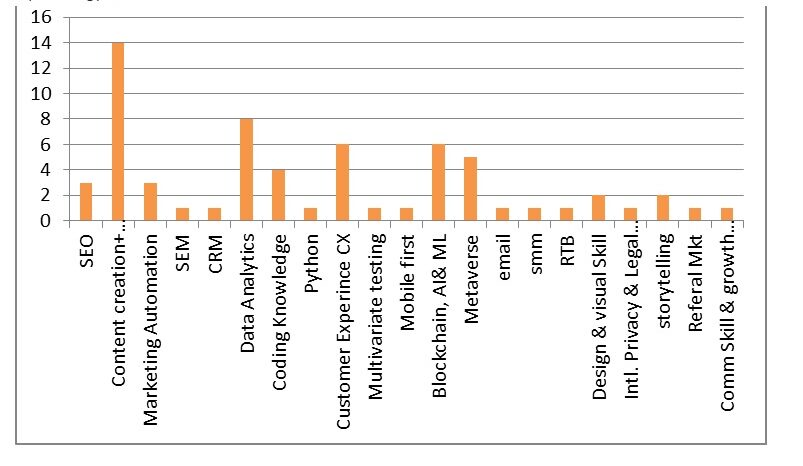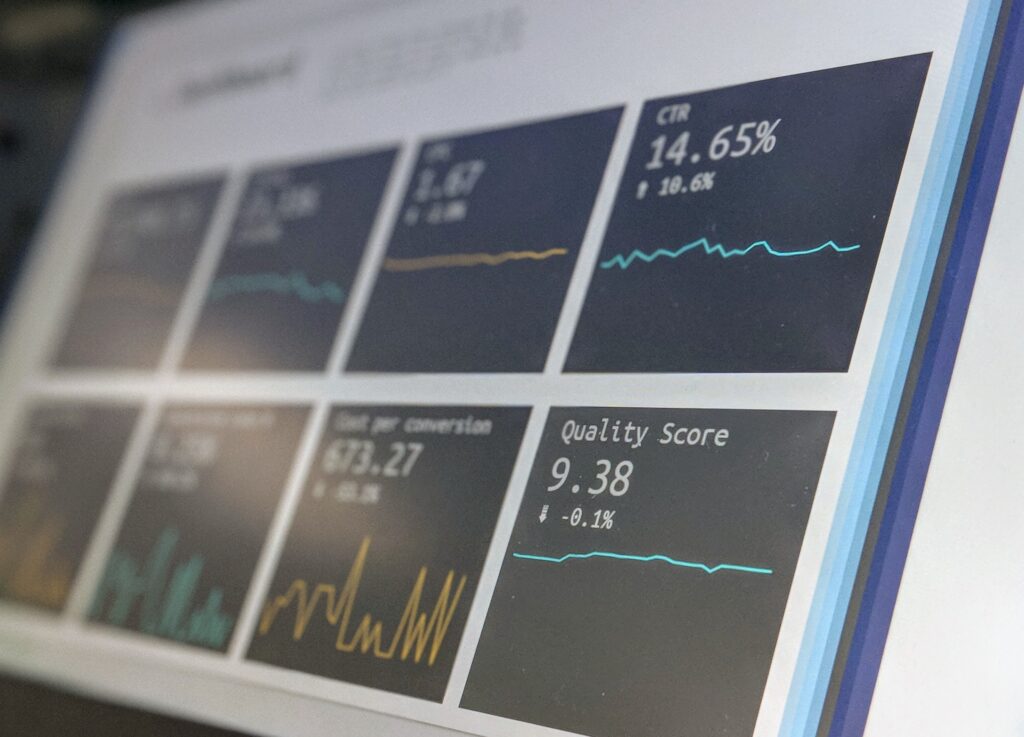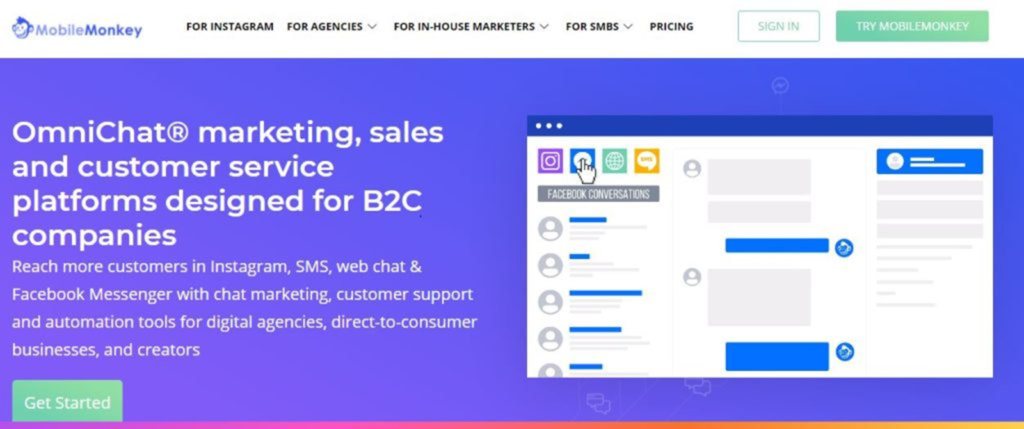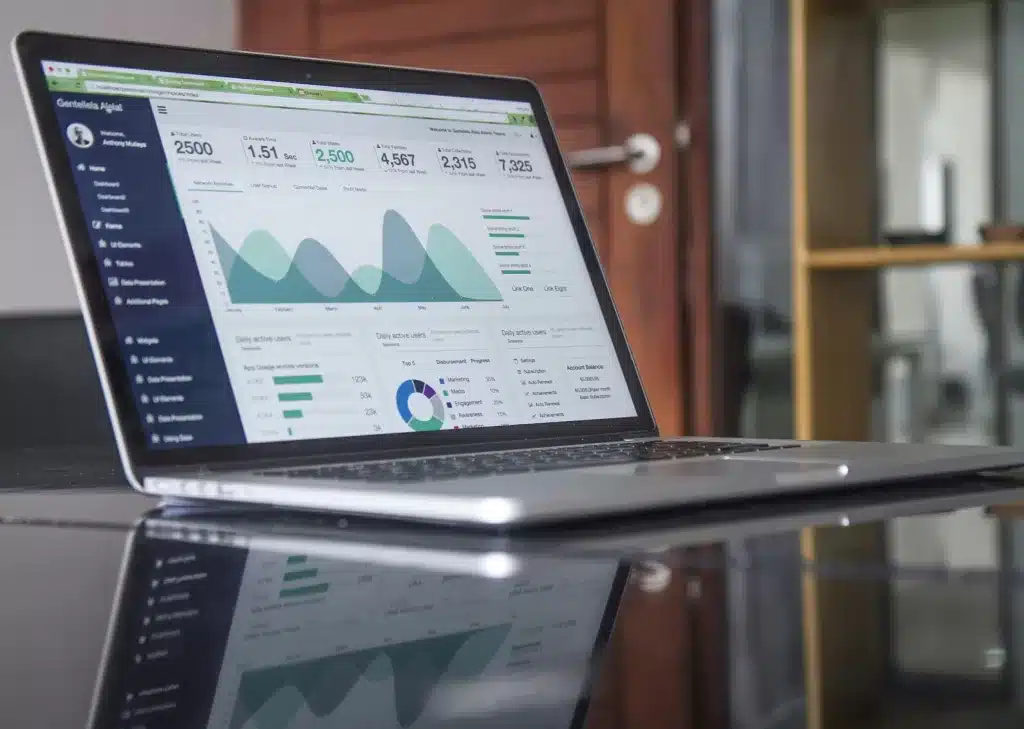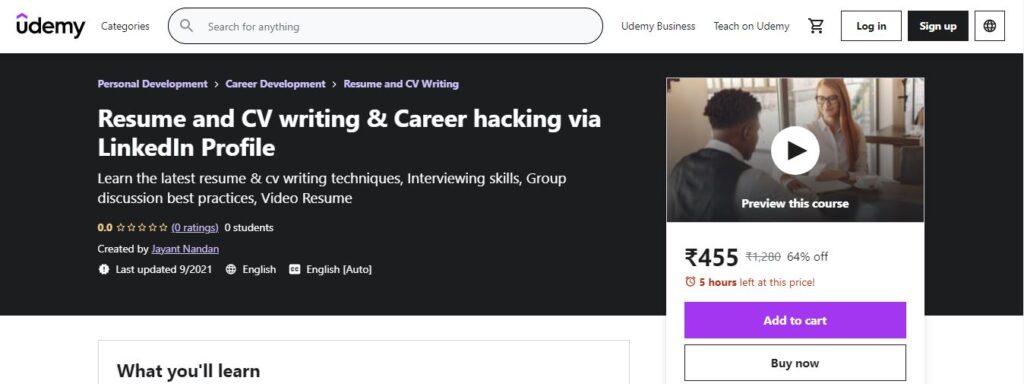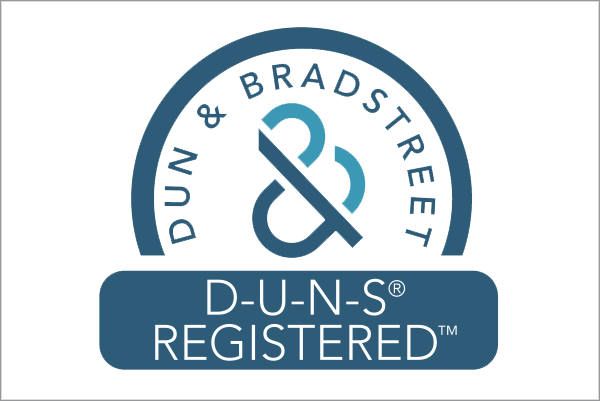Artificial Intelligence Machine Learning (AIML) in Digital and Social Media Marketing
What is Artificial Intelligence (AI)?
Artificial intelligence (AI) refers to the imitation of human intelligence in machines designed to think like humans and imitate their actions. The term can also be applied to any machine that displays features that resonate with the human mind such as learning and solving problems.
What is Artificial Intelligence (AI) in digital marketing?
Artificial Intelligence (AI) in marketing uses automated decision-making technology based on data collection, data analysis, and additional audience views or economic trends that may affect marketing efforts.
Artificial Intelligence (AI) is often used for marketing efforts when speed is important. Artificial Intelligence (AI) tools use customer information and profiles to learn how to communicate effectively with customers, and then deliver timely messages without the intervention of members of the marketing team, ensuring perfect efficiency.
For many of today’s markets, Artificial Intelligence (AI) is used to grow marketing teams or to perform many strategic tasks that require minimal human processing. Strategyworks is a having full fledged course in Digital Marketing with internship which includes the learning of some important tools like Google Ads, Facebook Ads which uses Artificial Intelligence and machine learning in Digital Marketing & social media marketing
Some use cases on how Artificial Intelligence (AI) is used in marketing?:
- Data analysis
- Natural language processing
- Media buying
- Automated decision making
- Content generation
- Real-time personalization
How to use Artificial Intelligence (AI) in digital marketing?
Artificial Intelligence (AI) is transforming many industries. From finance to technology, retail, hospitality everywhere. Artificial Intelligence (AI) changes the way brands do business. For digital marketers, it changes the way they connect products with their audience.
Computers and computer programs work as people with tasks such as voice recognition, visual acuity, translation and decision-making, which previously required human ingenuity. Now, artificial intelligence can accomplish those tasks independently.
Use cases of using Artificial Intelligence (AI) in Digital Marketing;
- Use of ChatBots: Artificial Intelligence (AI) transforms customer-focused services for digital marketers by increasing efficiency and improving user experience. These chat bots can work 24 hours.
Personalised Content: Artificial Intelligence (AI) in digital advertising to customise the content a user sees while browsing a website. With the help of artificial intelligence, machines can track spending habits and record what you like.
Thereafter, Artificial Intelligence (AI) can use that information to market users of similar products that they may be interested in. This process will help to differentiate your audience domains and drive sales with customised content. Both of these examples show how Artificial Intelligence (AI) in digital marketing is transforming space by helping brands increase productivity and revenue by creating automated tasks that required human performance and ingenuity.
How is Artificial Intelligence (AI) used in advertising?
Companies that serve ads, such as large social media platforms, use Artificial Intelligence (AI) to monitor ad usage, marketing, tracking, and customer behaviour. These companies use Artificial Intelligence (AI) to further enhance the ads placed on their network.
Artificial Intelligence (AI) transforms the possibilities in the world of advertising at all levels, from ad creation to targeted audiences to buying ads.
Today Artificial Intelligence (AI) is used heavily in advertising, Using Artificial Intelligence (AI) tools to target and differentiate audiences intelligently, build ad art, differentiate testing, improve performance, and improve spend – automatically, in real time, and on a scale.
How does social media use Artificial Intelligence (AI) for advertising?
- Rewrite and Test Ads: One of the great use of AI tool is that it automatically writes lines for email topics better than humans – and the same AI-powered functionality has now been adapted to automatically write Facebook ads and push notifications.
- Identify and convert audiences: Artificial intelligence will not just write ads. It will also show you exactly which audience you should target – and how you can convince them to act according to your ad messages.
- Get new audiences. AI tools apart from writing ad copy, it also helps in the process of gaining a new audience for your products and services — based entirely on what the program is learning from your advertising data.
- Get more conversions for less. Adobe Advertising Cloud is an essential platform that integrates advertising data from digital and TV campaigns. As part of the platform, Adobe Sensei, the company’s AI product, offers “predictions on how to get the highest conversion rate at the lowest possible cost,” according to the company’s website.
- Get more views on your ads. GumGum uses powerful computer-based AI technology to scan images, videos, and content across the web. After that, it uses the information from that analysis to help your brand-based ads where consumers are more likely to pay attention.
- Improve Ad Budgets: Money empowers your advertising, but technology can help you make the best use of it. Today, artificial intelligence can add budgets in real time or near real-time, to all channels, faster and better than people.
- Monetise media types. Lucy, an AI assistant from Equals 3, uses predictive and predictive models to show how well the news system will work. The tool then offers redistribution strategies to ensure that each dollar plays its role in your advertising.
What are the main applications of Artificial Intelligence (AI)?
Artificial intelligence today is not just a theory. In fact, it has many applications that work. A 2016 Gartner study shows that by 2020, at least 30% of companies worldwide will use AI in at least one segment of their marketing processes. Today businesses around the world are using artificial intelligence to make their process more efficient and profitable. We have reached out to some industry experts to share their views on the use of artificial intelligence. Here is the information we received:
- Conversations: Artificial intelligence continues to be a hot topic in the technology space and expands its start in other areas such as health care, business and gaming. AI-sponsored discussions in businesses will also see an influx of people more relaxed about how AI can actually help businesses compared to, say, taking over their jobs. From an analytical perspective, AI can be embedded in social media to change how they receive and understand data.
Chatbots, in particular, are always present, delivering smart and flexible analytics for conversations on mobile devices using standard messaging tools and voice communication sites This greatly reduces the time to collect data for all business users, thus speeding up business speed and ease of use analysts. their time, preparing companies for the growing needs of future data.
- eCommerce: Artificial Intelligence technology provides competitive limits to commerce businesses and is readily available to companies of any size or budget. Using machine learning, AI software automatically tags, edits and visually scans content by labeling image or video features.
AI enables consumers to find compatible products regardless of size, color, shape, or brand. AI viewing capabilities improve every year. By first detecting visual cues from uploaded images, the software can effectively assist the customer in finding the desired product. Many e-commerce marketers are already becoming more sophisticated with their AI capabilities, and is expected to grow in the future.
- AI to Promote Workplace Communication: Artificial Intelligence will help businesses improve internal and external communication by enabling individual customisation for each professional, allowing for improved focus and increased productivity.
- Human Resource Management: HR is likely to be one of the first business areas to benefit from AI for two simple reasons. Firstly there are tons of high-level data in HR, and secondly, HR is part of any very important company but feels the pressure of time.
If the aspects of the recruitment and HR work are automatic, HR employees may have the freedom to work directly with business or employees, using the personal time required by the HR department.
Artificial Intelligence will basically take out all the “worst” stuff for all HR employees (daily check-ups, time-consuming paperwork, and annoying data entry) as well as delivering powerful and insightful tools is a bonus to improving their performance. Automatic production of high-quality HR data and incredible AI benefits make it one of the first places to experience the fourth industrial revolution.
- AI in health: In the coming year, and especially in the next five to ten years, artificial intelligence will have a huge impact on the healthcare industry and the way healthcare-related companies use AI.
AI presents opportunities to apply our data collection to patients and to innovate clinics to improve patient outcomes on a much larger scale. AI improves reliability, prediction, and compliance with patient quality and safety. AI, as used in software, is used as a decision-making tool, but it should not have free domination without human interaction and guidance. While it will not replace doctors and nurses, it can make them more efficient, efficient and happy at work as it removes the burden of understanding on our providers – which increases confidence and reduces stress and anxiety.
- Internal Security Intelligence: In terms of cyber security, Artificial Intelligence is making great strides. Although AI is considered to be at the forefront of cyber security and can effectively address all issues, it is effective in protecting data. AI allows companies to identify user weaknesses or negative behaviour in business systems such as ERP or financial systems.
- Artificial Intelligence in Logistics and Supply Chain: Combined with customer data and statistics, physical implants eliminate conflicts of customer experience. Artificial intelligence enables businesses to work on consumer information to drive improvements in operations.
- Sports Betting Industry: In its article Sports Trading and AI: Gambling Insider, “As sports science analysis changes the way coaches, coaches, and clubs play their games, greater analysis of sports events helps opportunities for database operators to check potential event permits. each sport, increase the accuracy of the goal and thus make the next determination easier. ”
Human marketers cannot compete with artificial intelligence when it comes to analyzing large amounts of data. With AI we can perform analysis of the vast amount of sports analysis data available to increase our accuracy when it comes to predicting future results. This proves fruitful especially in today’s betting market, where large numbers of games and betting types are offered to a growing betting community.
- Simplified AI Manufacturing & production: For many clients when it comes to AI or Machine Learning, magic occurs when a large amount of data can be transmitted in milliseconds from a machine and process the data for a variety of information. This provides a realistic understanding that can help these customers reduce unproductive downtime, predict failures or build a “gold standard” that can be branded on all production lines.
- Casinos / Hotels / Combined Recreation: AI can help hotels / casinos find parts of customers they may not realise exist. Which customers want stay near the lake, those who need three papers in the morning before they can face the day. Armed with this kind of information, hotels can understand what is most important to their guests at each level, enabling them to anticipate the needs of their guests before guests also get to know them.
In addition, hotels can understand the key features of their highly profitable customers and be aware of the following important ones in case they sign up for an online hotel booking system. The use of deep neural networks and image filters can analyze and analyze images, which can allow hoteliers to monitor images that provide the highest level of booking conversion per channel. AI can also be used to calculate tourist dynamic collections to create liquid separation in real time.
- Sales: Online shopping creates rich data traits in terms of personal preferences, spending habits and popular individual consumer channels. Feeding these crumbs of digital bread on the AI-engine helps bring the chosen shopping trip to a wider audience. Automatic bots can create a healthy, seamless customer service experience, talking to the customer about their purchase history and interests.
On the marketing side, AI could bring that extra dash of compatible program advertising that has been waiting all these years. On the buyer’s side, AI helps create visual ads for website visitors who want to see it, while on the responding side, “bots manage to pay and pay for this transaction, giving marketers more time to focus on the big picture. With AI, customer service forecasting and marketing can be just around the corner. .
What are the best Artificial Intelligence (AI) and Machine Learning (ML) tools for digital marketing?
- Import.io : Import.io allows you to import data from any web page, even if the data you’re after is hidden behind login forms or other elements. You can then compile this data into spreadsheets, visualisations or machine learning algorithms. With this data on your side, you can do anything from competitor price research to analysing all of your customer reviews to pinpoint the most important areas for improvement.
- X.ai: X.ai is a perfect example of how simple and effective artificial intelligence can be – a refreshing break from many platforms that try to do too much. With X you’re simply looking at an AI scheduler that genuinely makes arranging meetings and other appointments effortless.
- Grammarly : Grammarly is another example of simple but effective AI – this time in the form of an intelligent proofreading tool. It’s not going to catch all of your writing errors but it’s an impressive piece of software and its integration with apps and browsers is incredible. It will flag up your typos as you write emails and blog posts in the browser and compile reports of your most common mistakes so you naturally become a better writer over time.
- Uberflip: Now we’re venturing into a more complex collection of AI tools, starting with Uberflip – an advanced content personalization platform that helps you create unique experiences for each customer. Content personalisation remains one of the biggest challenges for brands and Uberflip makes it easier to execute at scale for enterprise brands with a large, diverse audience to work with.
- Acrolinx: Before you can personalise content, you need to be able to create it and Acrolinx helps you create highly-effective content at scale. Acrolinx claims to be the only software platform that can “read” your content, thanks to its advanced artificial intelligence engine that assesses your content, grades it and guides you to creating better content.
- Unmetric : Xia by Unmetric takes a different approach by helping you to analyse the content of other brands and discover new content ideas an opportunities. Xia will unlock the secrets of other brands’ content marketing success and point you in the direction of what kind of content should get similar results for your own business.
- Cortex : Cortex also offers competitor content analysis but the focus here is on their social media efforts. Once you’ve analysed your rivals’ social efforts the platform will help you create better content for your own strategy, optimised for your target audiences with its AI insights. Next, Cortex will decide when the most effective time to publish your posts is and schedule everything for you as it continues to assess your competitors and unveil new insights.
- BrightFunnel: Creating better content is going to help you generate more leads and a better quality of prospects but you still need to turn them into sales. This is where BrightFunnel wants to help by using its artificial intelligence to help you optimise your sales funnels, meaning you turn more of those hard-earned leads into easier-earned customers.
- Cogito : Cogito is a real-time conversation analysis and guidance system that detects human signals in your customers’ speech and predicts what kind of reaction your sales and support teams should provide. The end goal is to empower your team with “emotional intelligence” so they know when to listen, when to take the lead and when to show empathy in interactions with your customers and leads.
- Tact.ai : Tact.ai aims to fill the gap between human interactions with an AI sales assistant, so your sales teams can spend less time navigating inboxes and more time dealing with profitable leads. If you’ve ever found CRMs frustrating to use, you’ll be happy to hear Tact.ai is there to remove as much of the friction as possible. You can scan business cards to create new contacts, sync calls and meetings with Salesforce and handle just about everything from the mobile app.
- ManyChat : With chatbots taking over more of the sales process for brands across every industry, the need to create bots on the fly is increasing. ManyChat makes it about as easy as it can be to create Facebook Messenger chatbots with the platform’s drag-and-drop builder. Forget about the coding implications of building a Facebook bot because ManyChat’s got you covered and it throws in some hefty analytics and automation features for good measure.
- Chatfuel : Chatfuel also helps you create Facebook bots but there’s an even heavier emphasis on automating your inbox with this platform. The goal is to automate as much of the conversations with your clients, customers and leads as possible until handing them over to your team members at the crucial moment. The end result should be a sales process that’s able to handle a significantly large volume of customers without the cost of expanding your team.
- Aizimov : Aizimov is an interesting piece of AI software that scribbles custom, personalised messages on your behalf. The platform scrapes information from the web (mostly form social media, news sources and financial transcripts) to create accurate emails and messages for each of your target audiences.
- LivePerson : LivePerson takes artificial intelligence to the message apps your prospects are already using and creates a sales channel on the platforms they’re most comfortable with. Essentially, you’ve got AI-powered chatbots integrating with apps like WhatsApp, Line, Google Assistant and even your website – so you can have meaningful conversations wherever your prospects want to have them.
- Optmyzr : Paid marketing has probably benefited from AI, machine learning and automation more than any other marketing strategy – purely because most of the workload involves crunching data, optimising settings and adjusting bids based on a variety of factors.
This is where technologies like automation and machine learning shine, which is why Optmyzr is such an impressive tool. In fairness, it doesn’t do anything you can’t script into Google Ads yourself (assuming you’ve got the programming skills) but it makes essentials like bid adjustments, keyword management, A/B testing and other optimisations simple – without the programming requirements.
- Pathmatics : Pathmatics takes the opposite approach to Optmyzr and focuses on analysing the advertising performance of your competitors. It offers dedicated AI implementations for business, advertising agencies, publishers and ad tech firms – all designed to unveil new opportunities based on the best performers in your industry.
- Cortex : Cortex by Retention Science is an AI email marketing platform that constantly optimises its own automation for better results. It refines your subject lines, discovers the best times to send emails to individual users, tracks user responses and then uses engagement data to create better campaigns all-year round.
- Sensai : Sensai is an AI social marketing insights and recommendations platform that analyses the effectiveness of your social posts and guides you towards creating a strategy that hits bigger targets. The mobile app puts a social media expert in your pocket, powered by detailed analytics and data-driven recommendations that help you pinpoint what to post and when.
- Slackla : Visual content is crucial to just about any social media marketing campaign and Stackla helps you discover user-generated content (UGC) and turn it into content that really engages with people. Instead of creating corporate videos and images that reek of sales pitches, Slackla’s algorithms discover the content your target audience is already creating – and other members of the same audience are engaging with – so you can cut in on the action.
- GumGum : GumGum offers a number of AI-powered features for marketers, advertisers, sports brands and other niches. On the advertising side of things, it uses to AI to analyse the images as well as the content of pages so you can choose relevant sites to place your display ads. While Google Ads allows you to target sites topically, it’s difficult to guarantee your ad message doesn’t conflict with the content.
- Emarsys : Emarsys is a fully-featured AI marketing system that promises to power your content, social, email, advertising and entire strategy with the latest technologies. We’re talking integrated personalisation across the board, sophisticated automations, predictive analytics and a single platform that streamlines your omnichannel marketing efforts.




